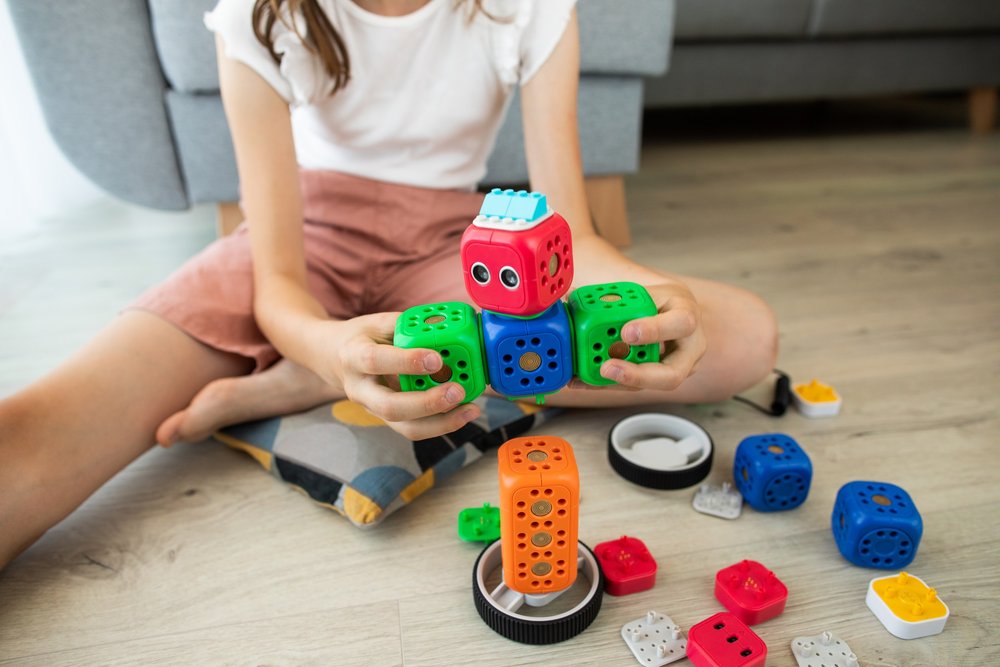In a previous post, “5 Ways to Stop Problem Behaviors Before They Start,” I talked about the importance of proactive strategies. You can find that post here. Proactive strategies can be so powerful, so I wanted to share 3 more of my favorites.
Behavior Rehearsal
Behavior Rehearsal is a strategy in which a child is given an opportunity to demonstrate a new skill in a “practice” scenario. So often we have big expectations of our kids and their skills. And while many children can develop appropriate replacement and coping skills, these skills take time and (cough) practice.
In behavior rehearsal, we contrive, or set up, a scenario and provide a lot of prompting and coaching for using a replacement skill. For example. Let’s say your child continues to get frustrated with her little sister. Every time she is playing with blocks, little sister knocks them down. She’s starting to hit her because she’s so frustrated. Here’s how you would use behavior rehearsal.
Identify an appropriate replacement behavior. In this scenario, teaching them to come ask mom or dad for help seems very appropriate.
- Prime them (fancy speak for giving the expectation) that you’re going to practice this. She’s going to be herself, and you are going to pretend to be the little sister. When you knock the block tower down, her job is to call for mom to come help.
- Role play, and prompt as necessary – if she forgets to use her words to call for help, remind her and praise her for using her words.
- If she remembers independently to use her words to call mom for help, praise her enthusiastically!
- Each time she goes to play with blocks, remind her of the skill she learned, and any incentive there may be for using it.
Comprehension Checks / Checks for Understanding
Children with ADHD, and even neuro-typical young children, may struggle to fully pay attention to directions they are given. One way to support them in following directions is to ensure they have heard what you said. You can do this by using a comprehension check, or check for understanding. Simply follow up your direction with a question. For example,
- In 5 more minutes the TV goes off. How much time do you have left?
- When you’re finished eating, put your plate in the trash. Where will your plate go?
- After we’re done at the pool we need to make a quick stop at the store. Where are we going?
This is particularly helpful when you’re giving information that your child may not really like. Why? Because bad news is bad enough, but when it comes as a surprise, well that’s what big feelings are for! With comprehension checks, you’ve given them a heads up and can work through any frustrations in the moment.
Proactive 1:1 Time
Proactive 1 on 1 time is one of my most favorite preventative strategies because 1) it works really well, and 2) it’s fun! Proactive 1 on 1 time is a way to fill up a child’s attention tank with tons of positivity. This should be a time free of distractions from other people (i.e. siblings!) and things (i.e. technology!). 1 on 1 time doesn’t have to be lengthy or expensive, but it should include something your child enjoys. This strategy is particularly effective if you are concerned that your child is using negative behaviors to get your attention.
Here are some suggestions:
- go to a local coffee shop for a treat
- play catch
- bake
- run an errand at a preferred store
- mani / pedi
- a date at a restaurant
- play at the park
- read a book or do a puzzle together
- arts and crafts
- play a board game
Remember, not all behaviors are preventable! Even with an exhaustive list of preventative strategies, every child is going to experience behavior challenges at some point, because they’re kids! But, by using these strategies regularly, you can help problem behaviors become less frequent, less intense, and more manageable.
If you need more individualized support, please head to the contact page and fill out the form.

View comments
+ Leave a comment